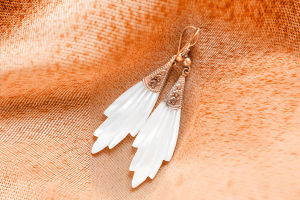Have you ever wondered which wrist is best for wearing a watch? We’ve all seen most men wearing their watches on the left hand—but why is that the case?
Today, we’re diving into the details to help all of us understand the logic and practicality behind the proper way for men to wear watches.
The Left Wrist Is More Than Just a Trend
We usually see men wearing watches on the left wrist. That’s not a coincidence. In fact, this habit is deeply rooted in both convenience and tradition. Since most people are right-handed, wearing a watch on the left wrist keeps it safer from scratches and knocks during daily tasks. Think about writing, shaking hands, or using tools—our dominant hand is busy, and that’s exactly why the left wrist becomes the perfect spot.
Design Favors the Left Side
Another reason we prefer the left wrist? The design of most watches actually supports this choice. Watch crowns—the little knobs used to adjust time—are typically placed on the right side of the watch face. If we wear the watch on the left wrist, it's much easier to reach the crown with our dominant hand. If we wore it on the right, adjusting the time would become awkward and uncomfortable.
Choosing the Right Watch for the Right Occasion
We can’t forget about style. Wearing a watch isn't just about checking the time—it also reflects our personality and status. For everyday life, men often choose from three types of watches: dress watches, business watches, and sports watches. Dress watches are usually more luxurious and meant for formal events. These are best worn on the left wrist, especially when paired with suits. Sports watches, while designed for durability, also follow the same logic—left wrist for better protection and comfort.
Does Personal Preference Matter?
Of course! While it’s recommended to wear a watch on the left, there's no hard rule. If we’re left-handed, wearing it on the right wrist might be more practical. The key is comfort and functionality. Some left-handed watch models even have the crown on the left side, which makes them easier to use on the right wrist. So it all comes down to what works best for each of us.
How to Wear a Watch the Right Way
Let’s talk placement. Whether we’re left- or right-handed, the watch should sit just above the wrist joint. This spot gives us stability without restricting movement. The strap should fit snugly—not too tight, not too loose. It should stay in place without sliding up and down as we move. And here’s a bonus tip: always make sure the watch face is pointing outward, so it's easy to read at a glance.
Wearing a Watch Says a Lot About Us
Believe it or not, the way we wear a watch can say a lot about who we are. A watch on the left wrist shows thoughtfulness and a sense of tradition. Many people also believe that this style gives off a composed and reliable vibe. Men who wear watches often come across as confident, punctual, and professional—especially when the watch is well-matched with their outfit.
Left or Right? It’s All About Lifestyle
We’ve seen that the left wrist is often the smarter choice—but that doesn’t mean it’s the only one. What really matters is how we live our lives. If we use our left hand more, then switching the watch to the right wrist makes sense. The goal is to protect the watch while making our daily routines easier.
Quick Tips for Everyday Watch-Wearing
- Prefer the left wrist if you’re right-handed
- Make sure the watch sits just above the wrist joint
- Adjust the strap to be firm but comfortable
- Match your watch style with your outfit and occasion
- Check that the crown is easy to use without straining
It’s About More Than Time
So, Lykkers, next time you glance at your watch, remember—it’s not just a timepiece. It’s a reflection of your taste, habits, and even your personality. The side we wear it on is less important than how it fits into our lives and expresses who we are.
Let’s keep choosing timepieces that speak to us and wearing them with pride. Because a great watch doesn’t just keep time—it reminds us to live it well, every single day, as one community.


